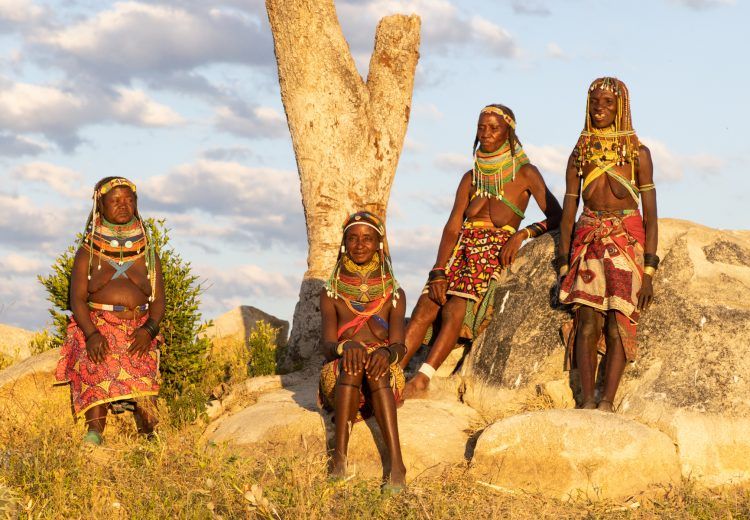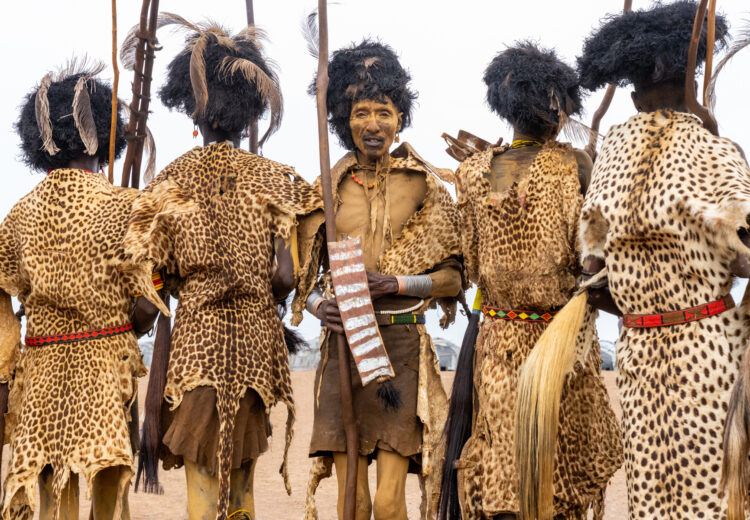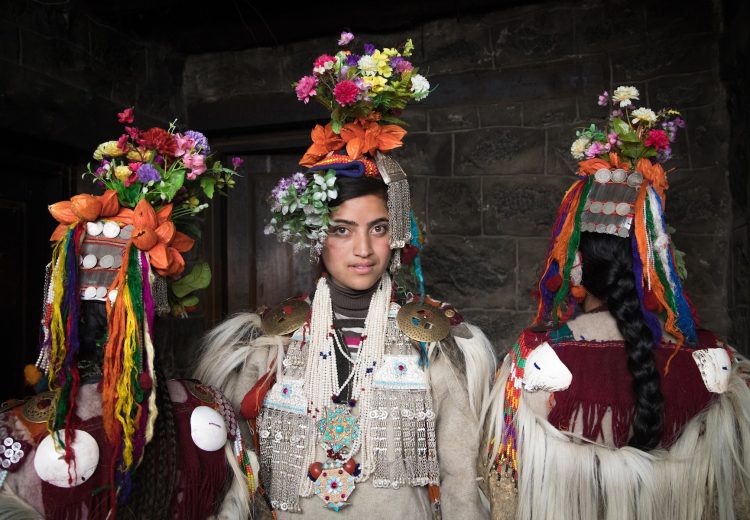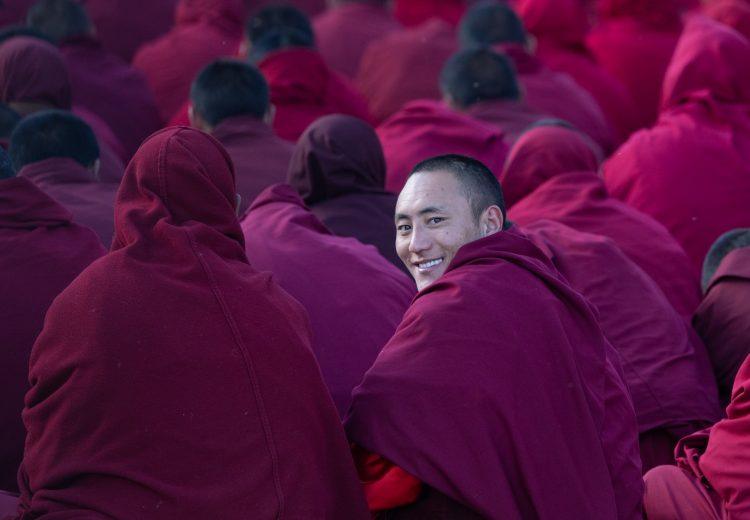India
ZANSKAR: A REMOTE BUDDHIST WORLD – Exploring the most isolated valley of the Indian Himalayas




































































































The view from the caves at Saspol looks over Likir and Alchi (Image by Inger Vandyke)

The ceremonial headdresses, or Tepis, of the Dardic Brokpa people in Ladakh (Image by Julie-Anne Davies)

Pretty Brokpa girls in ceremonial dress (Image by Inger Vandyke)

Karsha Monastery clings to cliff face on outskirts of Padum (image by Julie-Anne Davies)

Padma Tsolmo, nomadic goat herder, outside her stone Nomad ‘home’ (image by Julie-Anne Davies)

The multitude of chortens at Shey, once the former capital of Ladakh, near Leh (Image by Inger Vandyke)

The young monks of Phugtal at their morning school session, just below the cave, high in the monastery (image by Julie-Anne Davies)

Thiksey in broad daylight (Image by Inger Vandyke)

The landscapes of Alchi are home to hidden, ruined villages (Image by Inger Vandyke)

The otherworldly, moonscape eroded land forms that signal you are getting close to Lamayuru (Image by Inger Vandyke)

The hand of the 80 year old Rangdum Lama and his mala beads, constantly chanting om-mani-padme-hum as we visited (image by Julie-Anne Davies)

A ray of light catches Leh Palace at the end of the day (Image by Inger Vandyke)

Monks playing the large Dung Chen horns at the 5:30am ‘Call to puja’ on the rooftop of Karsha Monastery, with the wide open Padum farmlands below (image by Julie-Anne Davies)

An elderly Brokpa lady wears her decorative Tepi in a field at Dha Hanu (Image by Inger Vandyke)

An elderly lady in prayer at Tingmosgang monastery near Temisgam (Image by Inger Vandyke)

Portrait of an elderly Ladakhi lady walking the kora of a monasatery (Image by Julie-Anne Davies)

Staying overnight in Phugtal Monastery will be a literal highlight of our Zanskar photography tour. It is one of the most isolated monasteries on earth (Stock image)

Photographing the intricate and beautiful cave art at Saspol (Image by Inger Vandyke)

The incredible hillside monastery of Marsha in the remote Zanskar Valley (Stock image)

Ladakh is home to so much beautiful mountain scenery (Image by Inger Vandyke)

Exploring the incredible monastery of Lamayuru is a highlight of our Zanskar photography tour (Image by Julie-Anne Davies)

A different angle of the stunning monastery of Lamayuru in Ladakh (Image by Julie-Anne Davies)

The beautiful murals of Zanskar's monasteries date back many centuries (Image by Inger Vandyke)

At the markets in Leh, stalls selling organic seeds are set up with the assistance of the Women's Alliance (Image by Inger Vandyke)

The various colours of the mountains in Ladakh are incredible for landscape photography (Image by Julie-Anne Davies)

Buddhist chortens pierce the sky at Lamayuru in Ladakh (Image by Inger Vandyke)

The beautiful people of Ladakh are so kind (Image by Julie-Anne Davies)

A pretty Ladakhi girl in black and white (Image by Julie-Anne Davies)

The warm smile of an elderly lady at Anmu village (image by Julie-Anne Davies)

The mesmerising landscapes of the remote Zanskar Valley in Ladakh (Stock image)

Perfect your portrait photography on our Zanskar photography tour (Image by Julie-Anne Davies)

Serene portrait of a pretty Zangla nun (image by Julie-Anne Davies)

Portrait of a beautiful Brokpa girl in Dha Hanu, Ladakh (Image by Inger Vandyke)

An elderly Zanskari lady has a contemplative moment (Stock image)

A young Phugtal monk bundled up for early morning puja (image by Julie-Anne Davies)

Early morning rooftop call to puja at Matho Monastery (image by Julie-Anne Davies)

The Brokpa people of Ladakh wear a Tepi, or headdress made from beads and flowers. During the day a simple version is worn. During ceremonies this headdress is intricately beautiful (Image by Julie-Anne Davies)

The beautiful Brokpa people of Ladakh still retain their European looks, even in their advancing years (Image by Julie-Anne Davies)

Portrait of an elderly Ladakhi lady carrying her goat near Takmachik (Image by Inger Vandyke)

A beautiful muslim girl in Ladakh in superb light (Image by Julie-Anne Davies)

Explore the ancient petroglyphs of the Indus Valley at Dhomkar on our Zanskar photography tour (Image by Inger Vandyke)

Phugtal Monastery, built around a 2500-year-old cave has a history of mystics, Buddhists, scholars and gurus (image by Julie-Anne Davies)

Panels of seated buddhas are depicted on the cave walls of Saspol (Image by Inger Vandyke)

Portrait of a pretty muslim girl in Ladakh (Image by Inger Vandyke)

A Muslim woman working in her barley and wheat field on outskirts of Kargil (image by Julie-Anne Davies)

The beautiful and hidden Brokpa villages of the Indus Valley (Image by Inger Vandyke)

The stunning hike alongside the Tserap River en-route to Phugtal (image by Julie-Anne Davies)

Traditional Tibetan style architecture in the region of Alchi (Image by Inger Vandyke)

A shy Brokpa girl wearing her ceremonial Tepi and cloaks made from metal, flowers and skins (Image by Julie-Anne Davies)

In the back streets of Zanskar villages in is possible to meet elderly people engaged in traditional crafts like spinning (Image by Julie-Anne Davies)

Portrait of a smiling Buddhist nun (Image by Julie-Anne Davies)

The Drang Drung Glacier as viewed from 14,400 ft Pensi La Pass. Signs of change at the bottom of the image, as construction of the Zanskar road continues (image by Julie-Anne Davies)

Crossing in to the Islamic side of Ladakh briefly on our Zanskar photography tour (Image by Inger Vandyke)

Portrait of an elderly man in the remote Zanskar Valley of Ladakh (Stock image)

Portrait of an elderly Brokpa lady (Image by Julie-Anne Davies)

Padma Tsolmo invited us inside her stone home to see how she lives firsthand and it was fascinating (image by Julie-Anne Davies)

The incredible geology of the mountains lining the Indus Valley (Image by Inger Vandyke)

A Brokpa lady wears her Tepi, or headdress made of flowers. The Brokpa claim they are descendants of Alexander the Great due to their European appearance, however these claims are not founded (Image by Julie-Anne Davies)

Portrait of a young Ladakhi girl (Image by Julie-Anne Davies)

The beautiful girls of Ladakh's muslim community in Kargil (Image by Inger Vandyke)

The kindness of Buddhist monks (Image by Inger Vandyke)

A group of smiling muslim children in remote Ladakh (Image by Inger Vandyke)

The view from up high inside Phugtal, looking back at the direction of our hike and our sleeping quarters for the night (image by Julie-Anne Davies)

The beautiful, Dardic Brokpa people of Ladakh (Image by Julie-Anne Davies)

The head monk of Lamayuru is always a welcoming host to visitors (Image by Inger Vandyke)

The mighty Zanskar river leads to the valley of the same name. The Zanskar is one of the most remote valleys of the Indian Himalaya (Image by Julie-Anne Davies)

Thiksey monastery at dawn (Image by Inger Vandyke)

The sometimes fierce mural art of monasteries in the Zanskar (Image by Inger Vandyke)

Portrait of an elderly Brokpa lady in the doorway of her home (Image by Julie-Anne Davies)

The amazing hill fortress of Basgo in Ladakh (Image by Julie-Anne Davies)

A worker carries water down the back alleyways of Lamayuru's monastery (Image by Inger Vandyke)

Beautiful Brokpa girls (Image by Inger Vandyke)

The calming face of Buddha (Image by Inger Vandyke)

A beautiful muslim girl in Ladakh (Image by Julie-Anne Davies)

Young monks arriving for early morning puja at Karsha Monastery (image by Julie-Anne Davies)

The spectacular monastery of Lamayuru on a dramatic sunset (Image by Inger Vandyke)

In the remote Zanskar Valley a number of tiny nunneries represent some of the most isolated nunneries in the world (Image by Julie-Anne Davies)

Ladakh is filled with the most amazing diversity of people (Image by Julie-Anne Davies)

A young monk practices his prayers at Lamayuru (Image by Inger Vandyke)

The beautiful monastery of Thiksey, near Leh, is sometimes referred to as the "Mini Potala" (Image by Inger Vandyke)

Handmade traditional ‘Hanging Bridge’ en-route to Phugtal. Our group didn't have to cross it! (image by Julie-Anne Davies)

Located high on a hill near Alchi, the caves of Saspol are world heritage listed for their incredible artwork that links Ladakh to ancient Tibet (Image by Inger Vandyke)

You can trace so many stories in the lines of elderly faces in Ladakh (Image by Julie-Anne Davies)

Tsering Wang Chuk, a Karsha monk, smiling inside the Monastery (image by Julie-Anne Davies)

Tibetan artefacts for sale in Alchi (Image by Inger Vandyke)

Portrait of a buddhist nun sifting grains (Image by Julie-Anne Davies)

Some small towns in Ladakh sit at the base of stunning geological formations in the Indian Himalaya foothills (Image by Julie-Anne Davies)

The slow drifting waters of the spectacular Indus River in northern India (Image by Inger Vandyke)

Buried deep in a valley of Ladakh, the stunning monastery of Lamayuru is beautiful at sunrise (Image by Inger Vandyke)

The incredible lined face of an elderly man in the Zanskar Valley of Ladakh (Image by Inger Vandyke)

An elderly Ladakhi woman spins her mani wheel and chants Om Mani Padme Hum at Takmachik (image by Julie-Anne Davies)

Brokpa people are sometimes called The Flower People of Ladakh (Image by Inger Vandyke)

An elderly Brokpa woman in the village of Darchik, Aryan Valley (image by Julie-Anne Davies)

The stunning view of the junction of the Zanskar and Indus Rivers in Ladakh (Image by Julie-Anne Davies)

The monasteries of Ladakh and the Zanskar are often perched high on hillocks around the foothills of the Indian Himalaya (Image by Inger Vandyke)

Young Buddhist monks learn to read Tibetan scripture in their monastery classroom at Karsha (image by Julie-Anne Davies)

One of the beautiful murals at Saspol (Image by Inger Vandyke)

Detailed art at Saspol (Image by Inger Vandyke)
|
Friday 16th August –
Wednesday 28th August 2024 Leaders: Julie-Anne Davies and a local cultural guide |
13 Days | Group Size Limit 6 |
|
Monday 22nd September –
Saturday 4th October 2025 Leaders: Julie-Anne Davies and a local cultural guide |
13 Days | Group Size Limit 6 |
ZANSKAR PHOTOGRAPHY TOURS WITH WILD IMAGES
Cloistered within the dramatic mountains of the Great Himalayan range – averaging an altitude of 3,600m and sprinkled with peaks as high as 7,000m – India’s Zanskar valley is unreachable for all but four months of every year. At other times it is hemmed in by the frozen expanses of the river Zanskar and only accessible by one of the most treacherous ice-river treks you can undertake in all of the Himalayas – the phenomenal Chadar Trek. For a brief window of warmer weather, the isolated Zanskar opens its doors to the outside world where the most intrepid travellers can trek or take a road journey to visit the most isolated corner of the Himalayas in all of India. In 2021 Wild Images has arranged a unique Zanskar photography tour to photograph the stunning Zanskar Valley, its monasteries and nunneries, its people and their celebrated harvest festivals that take place in September.
The rugged Zanskar saw its first western travellers only in 1979. Prior to that it had been more or less fabled, a place that had seen no outside influences and where the only access in to it was on foot. In the last 40 years that has changed with the introduction of trekking routes and a seasonal road but even the most hardy Ladakhi people still consider the two day journey to reach it as difficult.
They have enshrined this beautiful remote valley in the following saying: “The Zanskar land is so barren and the passes so high that only our fiercest enemies or our best friends would want to visit us.”
The existence of the Zanskar valley first came into the media spotlight around a decade ago when the BBC’s Human Planet film makers aired poignant footage of a few small children trekking over a hundred kilometres to get back to school after their winter vacation. At the time it was filmed, the valley was considered to be one of the last few bastions of ancient Tibetan Buddhist beliefs on earth.
These days only the most intrepid travellers make the journey in to this valley and when they arrive, they are greeted with friendly Zanskari people who are mostly engaged in keeping Yaks or Tsos (a hybrid of Yaks and normal cows). A small amount of agriculture exists where altitude and the supply of water allows for small fields of barley to be grown.
Joining our Zanskar Photography Tour will allow you to witness the beauty of remote Zanskar villages; explore ancient monasteries; learn from yak herders how they make yoghurt and cheese; join monks and nuns in their daily prayers and participate in the festivities of the Zanskar’s lively and colourful harvest festivals.
LEH
Our Zanskar photography tour will begin with our arrival in Leh where we will spend a day resting and doing some gentle sightseeing to become acclimatised to the high altitude. We will practice some street photography in the old quarter of the city, visit Thiksey and Shey Monasteries and the Leh palace.
LAMAYURU AND MULBEKH
We will then begin our drive along the spectacular Indus valley via the ancient towns of Alchi and Likir. Taking a detour we will enjoy the clay forest eroded landscapes or Lamayuru before we will stop to photograph its stunning monastery which sits high on a rocky outcrop in a beautiful narrow valley. Travelling out of the valley the Photo La Pass (4090m) delineates the predominantly Buddhist people of eastern Ladakh from the mostly Sunni people of the Kargil district west of there.
Dating back to the 8th century, the Chamba Statue of Mulbekh is a giant figure of Maitreya that oversees travellers passing through to Kargil. It is now partially obscured by a temple at its base but the statue is a lovely stop for photography before we continue to Kargil.
KARGIL
Situated on the banks of the Suru River, a tributary of the Indus, Kargil is Ladakh’s second largest city after Leh. It is home to a predominantly Sunni muslim community and the city is laid out along the river around its central mosque. Culturally it is a nice introduction to the people who live at the head of the Zanskar in Padum, the last muslim community of the valley.
RANGDUM
From Kargil our adventure begins with the spectacular drive in to the Zanskar. During the summer it may be possible to see Brown Bears on this drive and we should also keep a lookout for Marmots sunning themselves as the day progresses. Our first stop for the day will be at Rangdum Monastery near the tiny village of Julidok. This relatively new monastery is situation atop a small sugarloaf hill overlooking the Suru Valley and it provides an ideal place to take a break before crossing the incredible Pensi La (4400m) From the top of this amazing pass we will be able to see the spectacular Darang Durung glacier which feeds the Zanskar River via its tributary of Doda.
From the moment we leave Pensi La, the dramatic landscapes of the Zanskar unfold and we will start to see local Zanskari people herding their yaks across the valley’s summer pastures. Over the time we are travelling in the Zanskar we will meet locally nomadic yak herders and learn how they keep their yaks, milk them and make local yoghurt and cheese.
KARSHA
The tiny and stunningly beautiful town of Karsha is home to the oldest and most ornate monastery in the Zanskar, the Karsha Chamspaling. Built against a craggy hillside like a massive white fortress, the monastery of Karhsa dates back to 958AD and it features ancient rock carvings nearby. Today around a hundred monks call the Karsha Gompa home and they belong to the Gelugpa sect.
Karsha is also home to a tiny and friendly nunnery, the Dorje Zhong, which dates back to the 15th century. Here a small group of nuns reside, mostly living their days through the study of Buddhist philosophies and Tibetan language.
STONGDE
Beautiful Stongde monastery, the second most prominent monastery of the Zanskar, overlooks a patchwork of grain fields in a valley hemmed in by soaring Himalayan peaks.
Stopping at the Stongde Monastery, we will explore the cave where the founder of the monastery, the great Tibetan master ‘Mapa’ lived during the time the monastery was constructed in the 11th century.
ZANGLA
Situated at the base of a jagged series of mountains, the pretty village of Zangla will be our next overnight stay. Before settling in to the evening, we will take a short visit to the nunnery of the village. Zangla’s Byangchub Choling nunnery is nestled in a mountainside at the end of the village road. A concrete courtyard surrounded by tall flowers is at the centre of the nunnery, which has an unusually large 500 year old prayer hall.
BARDAN
Before we leave the ancient town of Zangla, we will take a short walk through the village where we may see some of the village elders sitting and enjoying the morning sun while they spin their prayer wheels and murmur prayers. Our drive along the beautiful Tsarap Chu River which carves its way through the Lungnak Valley will take us to the incredible monastery of Bardan.
Built on a rocky outcrop overlooking the river, the Bardan Monastery was the first monastery of the Dugpa-Kargyud sect to be established in the Zanskar. It was built around the 17th century and it is home to a beautiful prayer hall with remarkably well-maintained murals.
PHUGTAL
Undoubtedly the highlight of the Wild Images Zanskar photography expedition will be our overnight stay in the phenomenal monastery of Phugtal. A literal high point of our tour, Phugtal Monastery has been carved in to an ancient limestone cliff, high in the mountains above the Tsarap Chu River.
Phugtal is the jewel in the crown of the Zanskar and it is one of the most remote monasteries in the world. Built in the 13th century (although some of its murals may date back 200 years before that), Phugtal is blessed to have a natural spring of water flowing through it. Crowning the hill above the spring is an ancient Cypress tree, which grows as a testimony to this sanctuary of water in a part of the Indian Himalaya which is way higher than the treeline of the mountains.
The temple paintings and thangkas in Phugtal are said to be identical in style with Alchi and the 10th century monastery of Tabo in Spiti.
Alongside the large monastery complex, lies a monastic school for students of the entire valley.
ZONGKUL
Leaving Phugtal the following day, we will travel back towards Padum, stopping at the beautiful monasteries of Zongkul and Sani on the way.
Hidden between the primordial folds of a rocky overhang, the Zongkul gompa is accessible by a walk up hand carved steps which lead to a well camouflaged monastery that overlooks a low lying area called Stod. It is believed to have been founded by the great saint Naropa, who meditated in one of the two caves around which the monastery is built. It is a Drukpa monastery and there is a footprint near the entrance of one cave, which is said to be of Naropa.
Zongkhul monastery was originally established around a thousand years ago and also contains some fresco paintings that are from the 17th century.
SANI
Lying around ten kilometres from the town of Padum, the beautiful Sani gompa belongs to the Drugpa sect. It is known to be the oldest in all of Zanskar and is perhaps the oldest in the entire Ladakh region.
The gompa is reputed to have been founded by Padmasambhava and the main temple in the monastery is dedicated to him. There is a large, ancient chorten adjoining the monastery known as Kanika chorten. It dates back to the 2nd century and it is widely thought to have been built by the emperor Kanishka. He was a powerful king who controlled most of North India, Afghanistan and Kashmir during that time. There are ten curious looking stones nearby and according to historians they are engraved with representations of deities in pre-Tibetan style. These give belief to the claim that Sani is the oldest Buddhist site in Ladakh.
The landscape surrounding Sani is lovely with plantations of poplar trees and the nearby village has fields of barley, potatoes and peas.
GARKON
Ladakh’s dardic Brokpa, or Flower People, live in one of the few fertile valleys of this arid region inside Jammu and Kashmir. The Brokpas are completely different– physically, culturally, linguistically and socially – from the Tibeto-Burman inhabitants of most of Ladakh. For centuries, the Brokpas have been indulging in public kissing and wife-swapping without inhibitions. Their cultural exuberance is reflected in exquisite dresses and ornaments, including a floral headdress called Monthu Tho. Brokpa men wear a large woollen dress held at the waist over woollen trousers. The women don special woollen dresses and adorn themselves with shells, beads and silver jewellery. Goatskin capes complete their traditional dress. Both men and women wear unusual headdresses decorated with flowers, coins and seashells. According to popular belief, the Brokpas were part of the army of Alexander the Great and came to the region over two thousand years ago. Besides tourists, villages like Garkon, where our tour spends a night, also attract anthropologists and very small numbers of photographers. Aside from extremely small scale tourism their main source of income is through the sale of products from their well-tended vegetable gardens. The custom of marrying within the community has ensured the Brokpas have retained their distinctive high cheekbones, aquiline noses, fair complexions and pale eyes. It has, however, limited the population of Brokpas, and the community hardly numbers over 2000.
ALCHI
The historical Ladakhi town of Alchi is home to the region’s oldest and most intricate monasteries. It is also nestled in a narrow valley that is dotted with traditional hamlets and hill fortresses. Arriving in time for sunset, we will seek out a place to capture the last light over this stunning valley.
On the last morning of our Zanskar Photography expedition we will visit the tiny, yet beautiful Alchi monastery which dates back to 958AD.
SASPOL CAVES
Just a few kilometres from Alchi, located high on a ridge overlooking the village, Saspol Caves is a glimpse into what medieval Tibet must have been like.
Here there are a series of amazing rock-cut temples. Four of these caves are richly adorned with paintings of the Buddhist pantheon from 13th – 15th centuries, representing a fusion of Indian and Tibetan Buddhist art.
The walk up to these caves is quite steep but short. Once there you will be rewarded with incredible views of the valley at the entrance to the caves and some of the most intricate historical art in Ladakh.
Accommodation & Road Transport
Accommodation during our Zanskar photography tour is in comfortable guest houses, home stays and (in Leh) hotels. Road transport is by modern minibuses.
Walking
The walking during our Zanskar photography tour is mostly easy in the villages. The treks to Phugtal monastery and the caves at Saspol are strenuous and vary in distance from around 20 minutes at Saspol to a few hours in order to reach Phugtal.
Climate
The Zanskar Valley is relatively high altitude. You can expect day time temperatures of between 15C and 20C. At night, the temperatures may drop below zero.
Photographic Equipment
For most photography of the people in Ladakh, a travel lens of around 24-105mm on a full frame DSLR or mirrorless body will be essential. A wide angle lens of around 16mm or smaller will be perfect for working with the people inside smaller rooms.
If you prefer to photograph people from a distance, then please consider bringing a larger zoom or telephoto lens. It is our experience that sometimes people can feel a bit intimidated by large cameras and lenses so you may wish to bring a smaller sized zoom lens like a 100-400mm which doesn’t appear as intimidating as a large fixed focal length telephoto lens. Such a lens can also be useful for any wildlife we encounter.
If you bring a good quality bridge camera instead of a DSLR or mirrorless it will be best if it has an optical zoom of 18-20x or more, combined with a reasonable wide-angle at the other end of the zoom range.
If you have a phone or tablet that can be used for photography, you may find these quite useful around people.
Similarly if you have a Polaroid camera like the Leica Sofort or an Instax Mini, these are wonderful to have on hand when you spend time with tribal people. If you decide to bring one of these, please bring lots of film with you as the photographs you produce will be quite popular!
Be sure to bring plenty of spare battery power. On a number of nights there will be no access to power.
If you would like to talk over suitable equipment, please contact our office. We will be happy to advise.
Photographic Highlights
- A chance to visit the most remote and inaccessible corner of the Indian Himalaya in the Zanskar Valley of Ladakh
- Visit some of the Zanskar’s most spectacular monasteries including Rangdum, Stongde and Bardan
- Enjoy an overnight stay in the incredible Phugtal Monastery, one of the most isolated monasteries on earth
- Meet the friendly nuns at the nunnery in beautiful Karsha
- Explore the ‘clay forest’ eroded landscapes and the stunning monastery of Lamayuru
- An adventurous drive into the Zanskar, crossing several high passes, including the spectacular Penzi La which has views over the Darang Durung Glacier
- Visit the beautiful Pibiting Monastery and the ancient Mosque at Padum
- Meet traditional Zanskari yak herding women and learn how they create dairy products like cheese and yoghurt from yak milk
- Street photography around the key attractions in Leh including Thiksey monastery, Shey monastery, Leh Palace and Leh Market
- Explore ancient Ladakhi Tibetan cave art and the oldest monasteries of Ladakh in Alchi
- Visit the stunningly beautiful Brokpa people of Garkhon in the Aryan Valley
- Explore the ancient rock petroglyphs of the Indus Valley at Domkhar
OUTLINE ITINERARY
- Day 1: Arrive in Leh with time to rest and adjust to the altitude before our welcome dinner
- Day 2: Day of photography around Leh, visiting monasteries, palaces and Leh old town
- Day 3: Day of driving to Kargil stopping in Lamayuru, Bodhkarbu, Wakha and at the giant Buddha at Mulbekh
- Day 4: Enter the Zanskar Valley via the Penzi La Pass. Visit Rangdum Monastery before driving to Padum
- Day 5: Visits to the traditional villages of Karsha and Zangla
- Day 6: Early visit to Bardun monastery before driving to the trail head for Phugtal Monastery. A 2.5 hour hike to Phugtal will see us arriving before sunset and overnight
- Day 7: Sunrise photography around Phugtal before the trek back to the road where we will drive to Padum
- Day 8: Full day drive to Rangdum stopping for photos on the way
- Day 9: Full day of driving between Rangdum and Kargil stopping for photos on the way
- Day 10: Drive to the region of the Brokpa people arriving in time to spend the afternoon in one of their villages
- Day 11: Morning photography with the Brokpa before driving to Alchi via Takmachik
- Day 12: Drive from Alchi to Leh via Saspol Monastery
- Day 13: Tour end in Leh
To see a larger map, click on the square-like ‘enlarge’ icon in the upper right of the map box.
To see (or hide) the ‘map legend’, click on the icon with an arrow in the upper left of the map box.
To change to a satellite view, which is great for seeing the physical terrain (and for seeing really fine details by repetitive use of the + button), click on the square ‘map view’ icon in the lower left corner of the ‘map legend’.
PRICE INFORMATION
Wild Images Inclusions: Our tour prices include surface transportation, accommodations, meals and entrance fees.
Our tour prices also include all tips for local guides, drivers and accommodation/restaurant staff. We also include payments to local people who are willing to be photographed.
Deposit: 20% of the total tour price. Our office will let you know what deposit amount is due, in order to confirm your booking, following receipt of your online booking form.
TO BOOK THIS TOUR: Click here (you will need the tour dates)
2024: confirmed £4220, $5450, €4950, AUD8220. Leh/Leh.
2025: provisional £4300, $5550, €5050, AUD8380. Leh/Leh.
Single Supplement: 2024: £250, $330, €300, AUD490.
Single Supplement: 2025: £260, $340, €300, AUD510.
If you are travelling alone, the single supplement will not apply if you are willing to share a room and there is a room-mate of the same sex available.
This tour is priced in US Dollars. Amounts shown in other currencies are indicative.
Air Travel To & From The Tour: Our in-house IATA ticket agency will be pleased to arrange your air travel on request, or you may arrange this yourself if you prefer.
ZANSKAR PHOTOGRAPHY TOUR: DETAILED ITINERARY
Zanskar Photography Tour: Day 1: Our Zanskar photography tour will begin with our arrival in to the capital of Ladakh, Leh. The rest of our day will be spent resting and acclimatising to the altitude of this beautiful part of the Himalayas. At dinner on our first night, we will have a briefing about the Zanskar expedition.
Zanskar Photography Tour: Day 2: On our first full day in Ladakh, we will have an easy sightseeing day around Leh, visiting the Thiksey Monastery, Shey Monastery, Leh Palace and Leh Old town for photography
Zanskar Photography Tour: Day 3: Today we will drive from Leh to the Ladakh’s second largest city of Kargil. Our journey will take around five to six hours and we will be making stops to photograph the monastery and moonland scenery of the Lamayuru area, the villages of Bodhkarbu and Wakha, and the giant statue of Maitreya Buddha at Mulbekh before we arrive in Kargil for the evening.
Zanskar Photography Tour: Day 4: This will be the day we enter the remote Zanskar Valley. Leaving Kargil we will drive over the spectacular Penzi La pass towards the village of Padum. Stopping to visit locally nomadic yak herders on the way, we may even see Brown bear on this road trip but if they are absent, we will also be keeping an eye out for other wildlife including Marmots. We will make a visit to the beautiful monastery of Rangdum before driving towards Padum where we will stay overnight.
Zanskar Photography Tour: Day 5: On this, our first full day exploring the Zanskar region, we will visit two of the valley’s most beautiful villages – Karsha and Zangla. En-route we will stop to explore the ancient monastery at Stongde. We will also visit the nunnery at Zangla. The charismatic streets of Zangla are perfect for street photography.
Zanskar Photography Tour: Day 6: After we leave Zangla we will travel up to the spectacular monastery of Bardun, located on a rocky outcrop overlooking the Zanskar valley. We will then drive along the Tsarap river through more beautiful Zanskari villages before we arrive at the trailhead of the walk to Phugtal Monastery, possibly the most remote monastery in the world. We will then pack up donkeys with our luggage and take a 2.5 hour trek to this stunning monastery where we will arrive in time for sunset.
Zanskar Photography Tour: Day 7: After puja and sunrise photography at Phugtal, we will pack up and depart for our vehicles and drive towards Padum.
Zanskar Photography Tour: Day 8: On the last full day in the Zanskar Valley, we will take a full day drive back to Rangdum, stopping for photography along the way.
Zanskar Photography Tour: Day 9: A full day of photography on the road between Rangdum and Kargil.
Zanskar Photography Tour: Day 10: Today we will drive to the beautiful region of the Dardic Brokpa people where we will spend an afternoon and morning doing photography with these stunning people at their village of Garkon.
Zanskar Photography Tour: Day 11: From Garkon we will drive to Alchi breaking at the eco village of Takmachik for lunch.
Zanskar Photography Tour: Day 12: Today we will drive from Alchi to Leh, stopping for photography at Saspol caves and the surrounding area.
Zanskar Photography Tour: Day 13: Our Zanskar photography tour will end after an early breakfast and departure for Leh airport.
India: Zanskar – A Remote Buddhist World Tour Report 2022
Leh: Monasteries, Monks and Markets Arrival by air into Leh at 11,562ft deserves the same respect and guidelines no matter how many times you visit. The thin air of the Buddhist Blue Sky kingdom means your body needs to take time to acclimate. Day one reflects this necessity and we began our tour with a […]
View Report
Other Wild Images Tours for People Photography
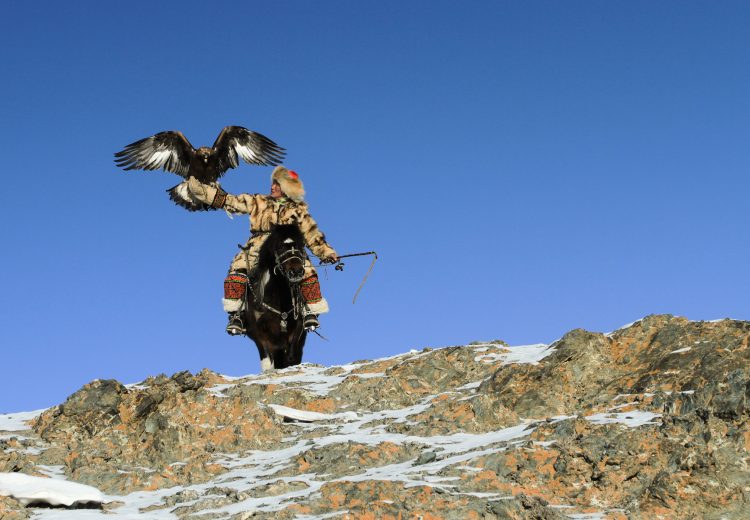
Mongolia
September 2024
EAGLE HUNTERS OF WESTERN MONGOLIA: Including the Altai Kazakh Eagle Festival at Sagsai
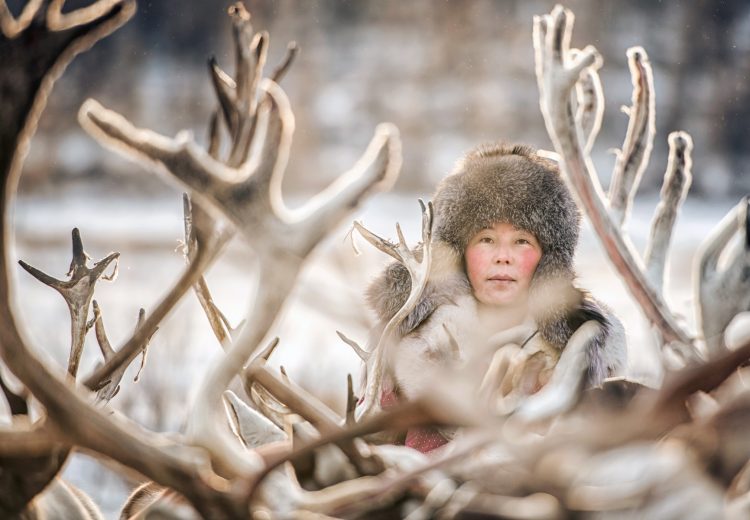
Mongolia
September-October 2024





































































































